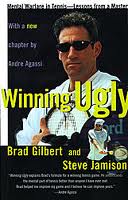Developing consistency in your competitive results starts with how you prepare for a tournament. The establishing an individualized routine is essential for every fencer’s training program. It creates a foundation which sets the tone for the rest of the day. How you feel going into a competition -both in your mind and body- should be planned out and rehearsed as if you have done it a million times before. That way, when it comes to competition day, you won’t feel as if it is a new and stressful experience.
Developing a game plan is a critical part of any competitive fencer’s training. It can make a huge difference in your competitive results. Inconsistent preparation can lead to inconsistent performances. Some fencers think that they have an established routine, when in fact they have a ritual. A ritual is based on superstitious behaviors which have no relation to performance (see Dumbo’s Magic Feather, Fencing.Net, August 20, 2007). It may stem from anxiety that is created by the athlete thinking they have little control over their performance. They are more concerned about what happens to them, rather than what they do that affects their performance.
Instead of having a ritual, a routine is an established plan that practices an athlete’s game-day preparation and in-competition game plan. These task-related behaviors give the athlete a sense of control, stability and readiness. A routine is developed in such a way that inconsistencies that negatively impact performance are significantly reduced.
There are many types of routines. Fencing being an individual sport, the type of routine that you make must be right for you. Have a routine for each part of the tournament preparation process.
Example of pre-tournament routine
Night before tournament
- Check weapons and gear.
- Pack extra clothes, water, towel, food, painkillers, and directions to venue.
- Go to bed eight hours before alarm is set to go off.
Morning of tournament
- Wake up two hours before check-in time.
- Shower, eat breakfast.
- Leave for venue 45 minutes before check-in closes.
- Sign in at registration.
- Re-check weapons.
- Warm-up and stretch. Light bouting. Continue to stay hydrated.
- Put on warm-ups over uniform.
Example of pre-bout routine
- Know when I am going to fence the next bout and who it is against.
- Take off warm-ups when bout before mine is at 4 touches.
- Walk over to reel as fencer is unhooking.
- Place mask between legs and weapon on the floor.
- Hook up to reel. Test body cord on bell guard. Plug in weapon. Test weapon. Check for missing screws, bend in blade, loose bell guard and loose barrel.
- Hold mask in hand as I walk up to ref for weapon testing. Hold mask between my legs as the weapon is tested.
- Test bell guards by me hitting their bell guard and then I hit my bell guard to their tip in a fast manner.
- Walk to line, salute, and put mask on. “You can do it,” I think as I put on my mask. Look down at my front toe to make sure it behind the line. I sit down en guard and I nod my head when the ref asks, “Ready?”
Example of in-between touch routine
- React to touch.
- Walk back to line.
- Stand in en guard position, shift weight from front leg to back leg.
- Check for loose handle by touching the bell guard with my back hand.
- Think cue words and phrases. “Distance,” “point out,” “quick feet,” or “stay on it.”
- Look down at my front toe to make sure it behind the line.
- I sit down en guard and I nod my head when the ref asks, “Ready?”
Example of post-tournament routine
- Take off gear except knickers. Wrap body cords up.
- Wipe out inside of mask.
- Take a long cold shower. Change into new clothes.
- Pack up gear. Eat a big dinner at local restaurant.
Developing and following a routine doesn’t guarantee successful results every time to use them. What is does is take out the element of variability. If a fencer didn’t fence well in a tournament every once in a while and they have been following the same routine, they know that whatever went wrong had very little to do with following their routine. They can narrow down what could have caused the troubles they experienced. Instead of looking at many changing variables that could have caused them to fence poorly, their consistent routines can help them work on improving their weaknesses.
Check out this clip of the All Blacks Rugby team. This sort of routine would not be suitable for an individual fencer, but it is a routine that is suitable for a rugby team. Rugby is a team sport that requires a lot of aggression and team work. Part of their routine is to sing and act out a chant that has spiritual meaning to them. It not only unites the players, but gets the crowd “psyched” up along with them too.
http://www.nzallblacks.net/haka.asp



